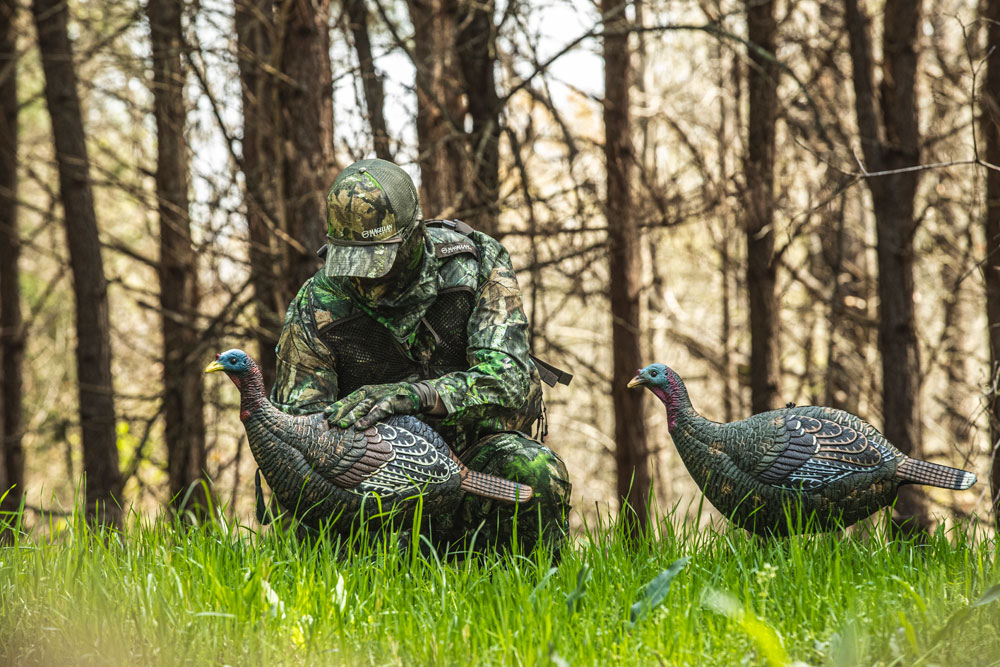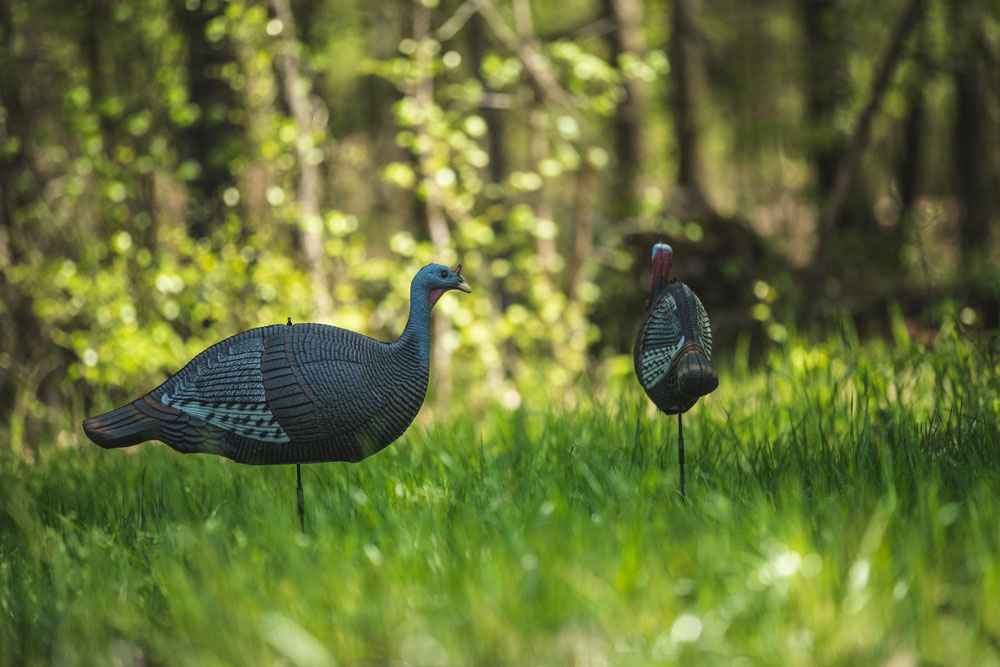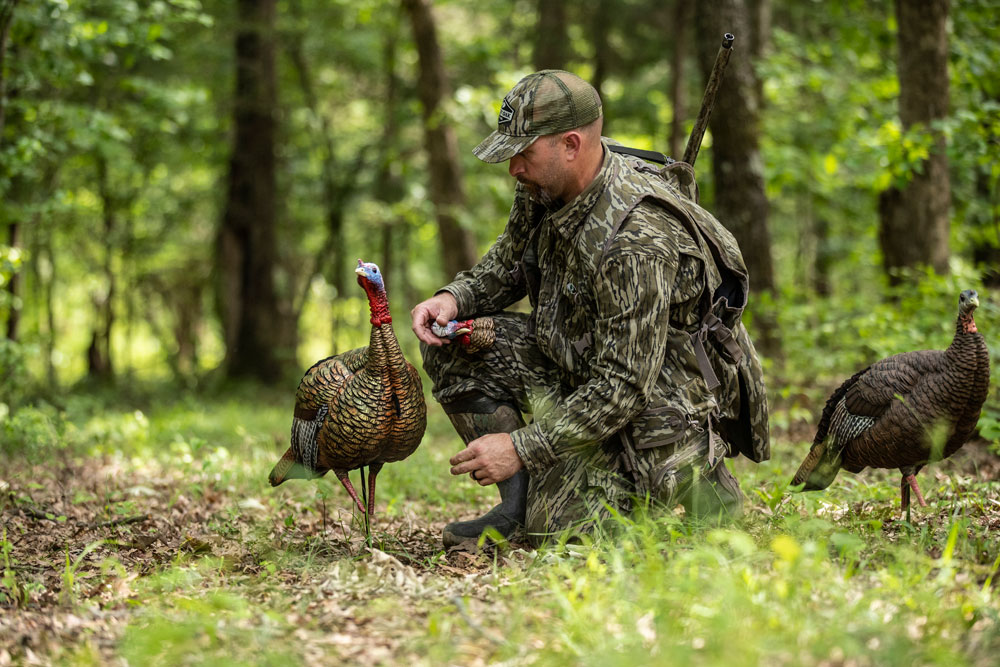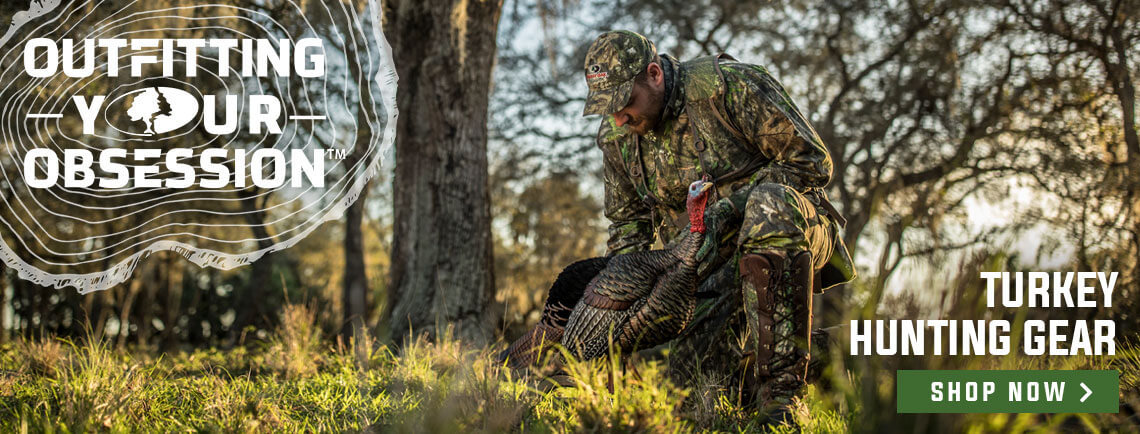Bob Humphrey
It’s good to have options, which is certainly the case when it comes to turkey decoys. Where once there were just a few brands and styles to choose from, today there are dozens, from flat photo renditions to darn near the real thing. But is there such a thing as too much of a good thing? Maybe not, as different types have their pros and cons, and some are more effective under certain specific circumstances. Let’s take a look.

2-D or not 2-D
Two-dimensional decoys or silhouettes offer the obvious and distinct advantage of portability. They’re lightweight and take up little space in your vest, making them a great option for run-and-gun hunting. Thanks to technology, they’re also quite realistic. The production process involves printing an actual turkey image on the decoy material - durable, corrugated plastic cardboard in the case of Renzo’s decoys, and fade-resistant cloth stretched over a steel hoop spring frame in the case of Montana Decoys.

The Next Dimension
Options and choices become greater when you move into the third dimension. The standard, and about the only type available when I started hunting was Feather Flex foam decoys. They’re made of soft, polyethylene foam so they’re lightweight, collapsible and easy to carry. Despite the flimsy material, they’re also quite durable; I have a few in my arsenal now pushing three decades. They’re not the most realistic, at least to the human eye, but turkeys don’t seem to know the difference.
The next option is shells: hollow body decoys made of rigid or semi rigid plastic or rubber. They add a little more weight and are less collapsible, if at all. However, they’re less likely to spin on the stake or even blow away in high winds - I speak from experience.
The more realistic the better and Avian-X set the bar in terms of realism with their rigid body and collapsible shell decoys. Several other companies now offer similar styles that feature 3-D feather detail, authentic body posture and realistic paint scheme. The obvious trade-offs are bulk and weight. You can stuff them in your game pouch or carry them in a sack but they’re better suited to long stake-outs than running-and-gunning.

Variety
Whatever type you choose, it’s good to have a variety of poses to suit the situation. Any hen might do, but a feeding hen provides a more relaxed scenario. Several companies even make squatting hen decoys that simulate the posture of a hen that’s ready to be bred.
Bob Humphrey is a certified wildlife biologist, registered Maine guide and outdoor writer who has written two books and hundreds of magazine articles on turkey hunting.































